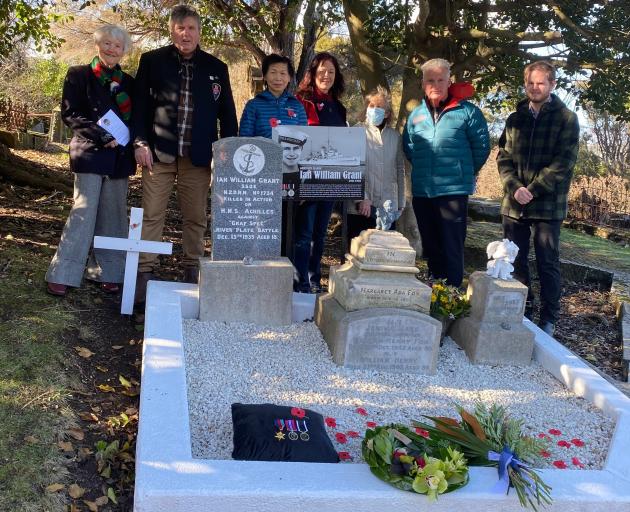
Ordinary Seaman Ian William Grant (18) was manning a gun aboard the HMNZS Achilles at the famous Battle of the River Plate, in the South Atlantic, on December 13, 1939, when he was struck by a splinter from a near miss and suffered mortal injuries.
He was buried at sea the next day, and a memorial was later erected by his family at Dunedin’s Northern Cemetery.
In the 80-plus years since, the memorial had gradually fallen into disrepair, until it was spotted as a site of interest by Otago Military Historical Group chairman Peter Trevathan.
The group swung into action, making contact with Seaman Grant’s extended family and launching a project to refurbish the memorial and create an information plaque for visitors.
The project culminated on Saturday with a rededication service attended by about 30 members of Seaman Grant’s extended family, including his nieces and nephews, members of the Otago Military History Group, TS Waireka and TS Nimrod sea cadets, and representatives of HMNZS Toroa naval reserve and the Defence Forces.
The refurbished memorial was unveiled by nieces Patricia Haraki and Pamela Whipp, who were delighted to be able to honour their late uncle, alongside fellow nieces and nephews Jim Marr, Roger Grant, Glynis Windle, Robyn Harrison, and Sandy Wallace, and fellow family members.
"It was a wonderful occasion, and everyone is delighted with how the memorial has turned out," Mrs Whipp said.

Mr Trevathan was also very pleased with the rededication service, and the project to honour the first Dunedin person, and possibly the first New Zealander, killed in World War 2.
"The family were very supportive of the project, and contributed to the costs of the work, which was great," Mr Trevathan said.
"It’s all about the family really — it’s really nice for everyone to get together and share their stories, and it’s a good way to highlight the important military graves in the city."
Bunnings had also helped out with materials for the project, he said.
The information panel now installed at the memorial, designed by Hilda Bennett, told the story of Seaman Grant’s experiences at sea as a young man and of the Battle of the River Plate — the first sea battle of World War 2.
The restoration of Ian William Grant’s memorial is the second such project to be completed by the Otago Military Historical Group .
The first was the Southern Cemetery grave of John Bevin, who took part in the doomed Charge of the Light Brigade at the battle of Balaclava, in 1854, and who later emigrated to Dunedin and became a senior member of the police constabulary.
Mr Trevathan said the group was working on another six projects involving local graves, had completed refurbishing the Upper Junction war memorial site, and was planning to restore a World War 2 gun emplacement at Tomahawk.













